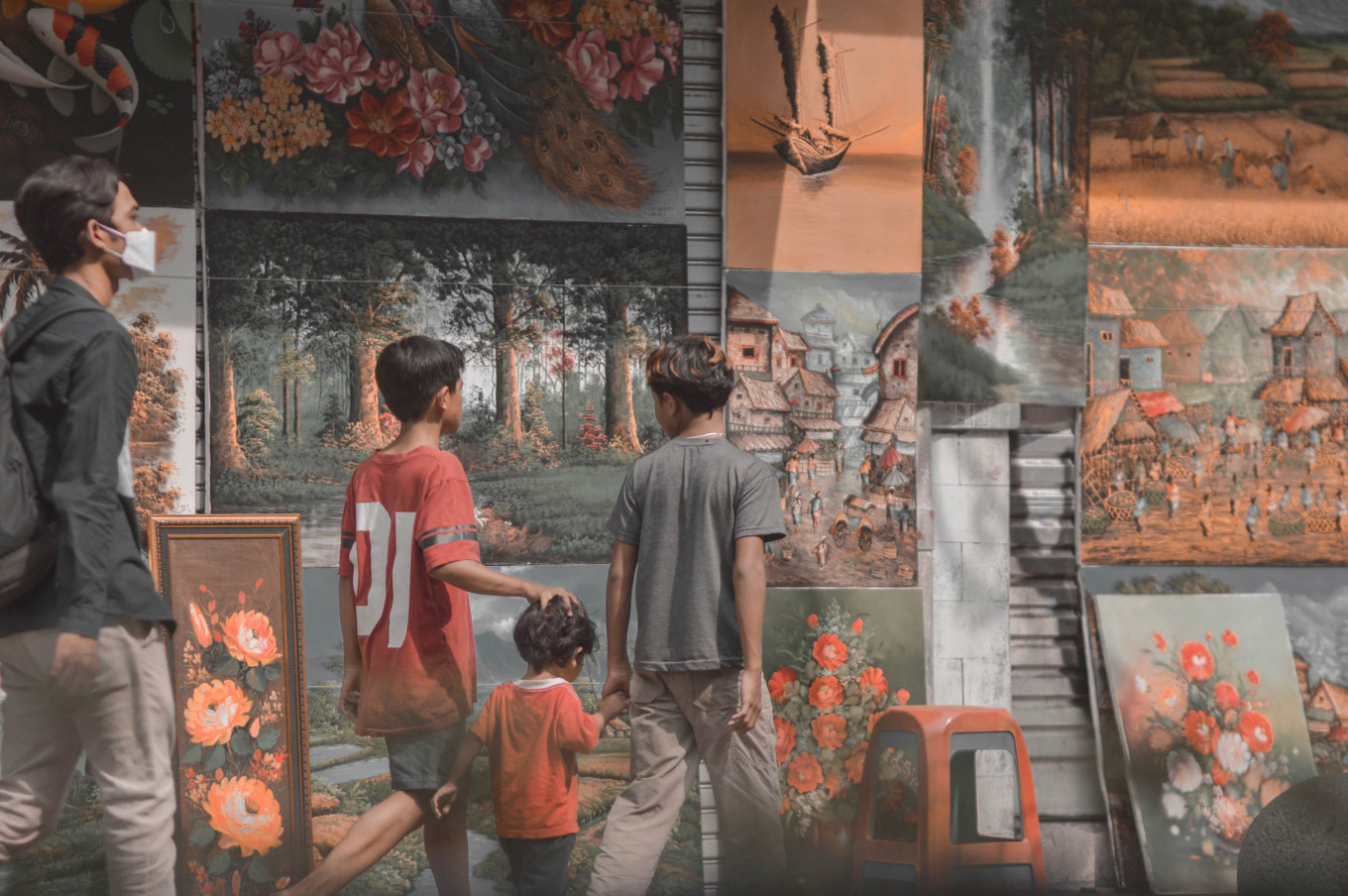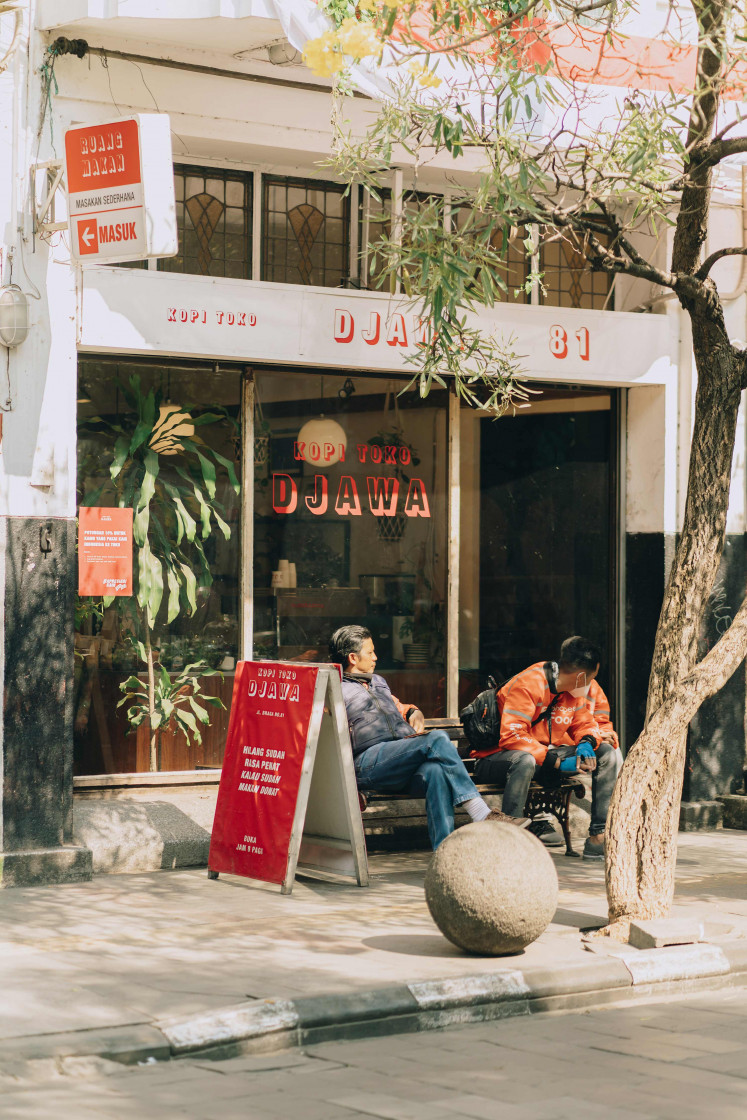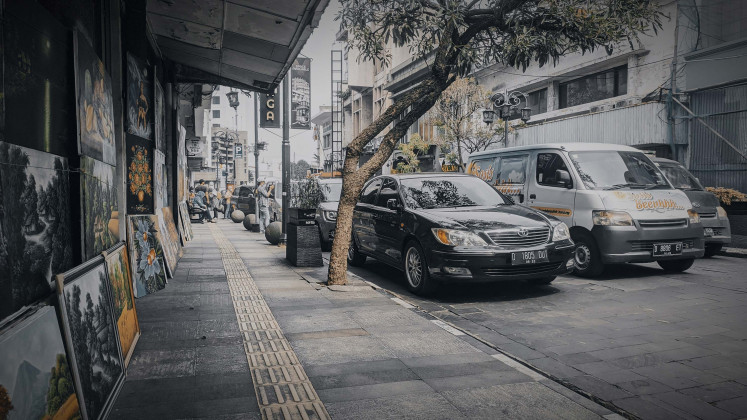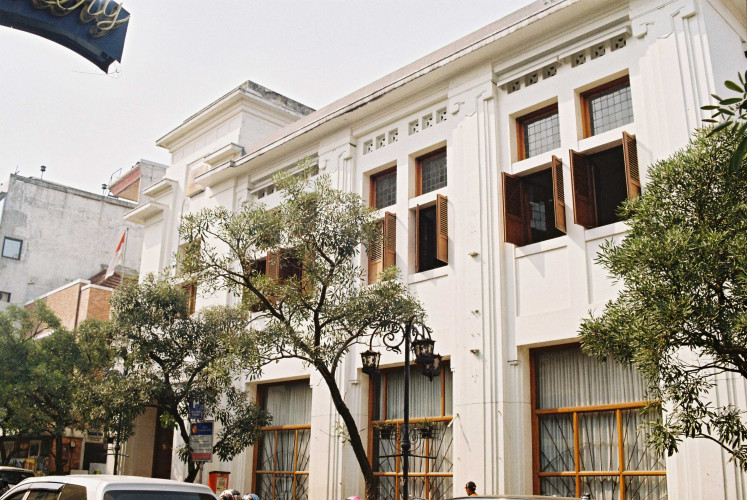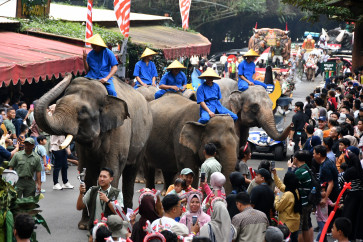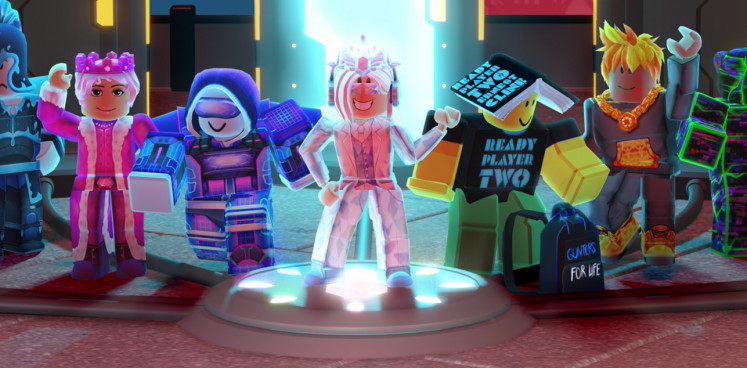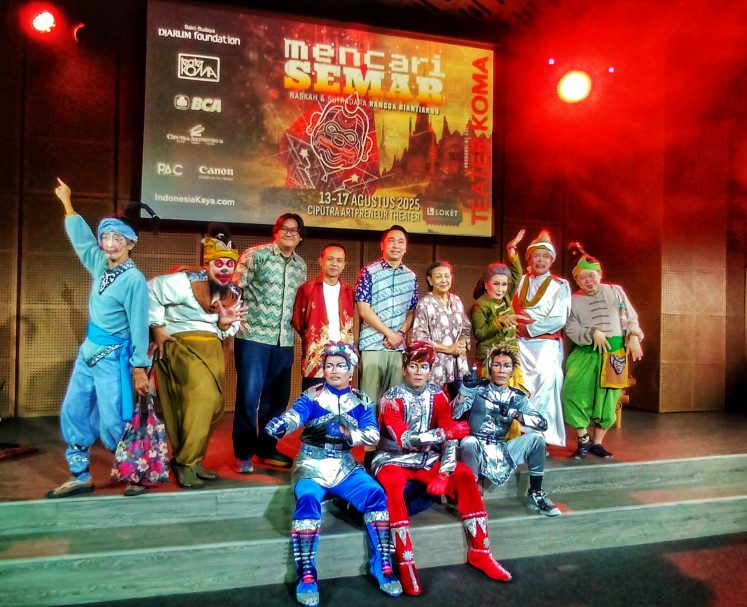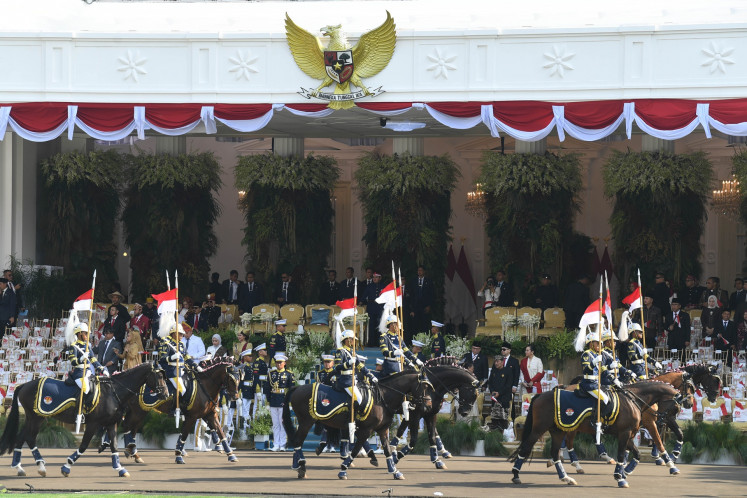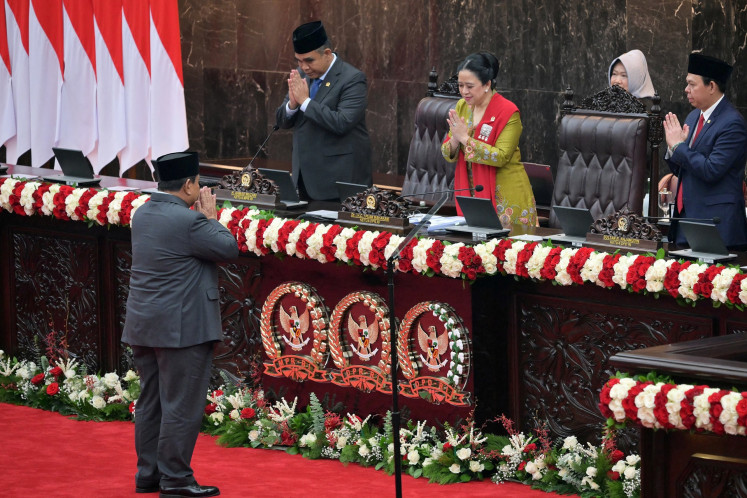Popular Reads
Top Results
Can't find what you're looking for?
View all search resultsPopular Reads
Top Results
Can't find what you're looking for?
View all search resultsA stroll down Bandung’s historic Jl. Braga
Change text size
Gift Premium Articles
to Anyone
Bandung’s iconic, once crime-laden Jl. Braga evokes culture and history even as it perpetually renews itself.
In the early 20th-century Dutch colonial era, Jl. Braga was an unpaved high street frequented by plantation lords shopping for the newest western cars and a variety of luxuries. Despite a downturn during the Indonesian revolution in the 1940s, the street has always held a place in the hearts of Bandung residents. For some, it is a reminder of the olden days, when life was much less complicated (if one forgets about the political turmoil).
House of sweets
A glaring, unshaded fluorescent bulb was suspended right next to the cashier’s post at one of Bandung’s oldest bakeries, Sumber Hidangan, known during the Dutch colonial era as Het Snoephuis. Its bluish light felt intense in the sparsely lit, high-ceilinged shophouse on Jl. Braga.
At the cash register sat a hunched woman in her 90s. Her eyes were glued to her work as she drew up receipts.
“She’s the third generation [of owner],” whispered a shop attendant before going over to the woman and handing over a sales note.
Idle time: Drivers wait for online orders in front of Kopi Toko Djawa on Jl. Braga. (Unsplash/ Prananta Haroun) (Unsplash/ Ahmad Fahmi Hasby)The shop does not seem to have changed much since its founding in 1929. Barring the new cash register (the shop also has a vintage one that sits grandly on a counter in the dining area), the weathered walls, warped wooden wall panels, peeling paints and concrete tiles seemed to be begging to tell stories of the past.
Aging wooden display cases with foggy, yellowed glass were filled with various kinds of breads, pastries and biscuits, with most of the names in Dutch. Not long into the afternoon, the shop had run out of a favorite, a milk white bread that the attendants referred to as melk, Dutch for “milk”.
“You should’ve come around noon for the melk,” said another attendant, Sumiyati, as she was scooping speculoos cookies onto a vintage scale, measuring out an order for a customer who was browsing through the day’s unsold goods. There were only 30 minutes left before closing time, and the dining area was only lit by the ventilation gaps and an open door. Its windows were closed and the hatches were fastened.
However, some of the bakery’s windows were intentionally closed throughout the day, to give room for peddlers and streetside art dealers. Stacks of paintings lined the bakery’s facade. The paintings were sourced from Jelekong, a village in Baleendah, Bandung district, that is known for its painters.
Young Turks
“[The paintings] can range anywhere from Rp 50,000 to Rp 300,000,” said the parking attendant, who was standing idly near the bakery’s doors.
His left hand was holding a plastic leash that was attached to a toy car. A child came dashing from the shop next door, blowing soap bubbles and laughing heartily all the while.
“I’m from Cilacap, mas,” he said as he picked up the child and walked away. “Don’t forget to tap your e-money at the machine!” he shouted over the blaring music from across the street.
Across from Sumber Hidangan, a newer store that was founded by the makers of online comic series Tahilalats, Toko Tahilalats, took up the space where French, another long-lived bakery from 1977, once stood. French was hit hard by the COVID-19 pandemic and had to close up shop not long after the lockdowns started.
Northbound: Jelekong paintings hang in front of Sumber Hidangan's shop on the northbound branch of Jl. Braga. (Unsplash/ Ahmad Fahmi Hasby) (Unsplash/ Ahmad Fahmi Hasby)A group of youngsters holding soft-serve ice creams were taking turns posing in front of the newly opened shop’s neon signage. Others were taking pictures with a “life-sized” figure of one of the comic’s characters, known as “The Normal Guy”, according to a plaque on the figure’s base.
The shop’s interior was bare and grayish with features akin to a modern train station and was converted to showcase the comic’s art.
The sidewalk started to get more crowded as I moved north. Newer shops and hang-out spots began emerging after one of Bandung’s heritage bookshops, Toko Djawa, was converted into an eponymous coffee shop in 2017. The coffee shop had kept the typeface of the original bookshop and derived its graphics from it. It had moved to the shophouse next door, however, as its original space had been acquired by Koffie Braga.
Stocker House, The Cantina, Jurnal Risa – it was hard to keep track of everything along the crowded sidewalk. People kept stopping to take selfies or were stopped by others who needed space to take pictures of their friends posing in front of the shops. Some of the pedestrians even chose to step down onto the crowded road, adding more stress on the supposedly one-lane road. Cars were struggling silently, merging into one lane in front of the spillover of pedestrians and motorcycles parked perpendicular to the sidewalk.
Shifting times
“Would you like to have your photo taken?” asked a man in his 20s, holding a DSLR camera. A colleague of his was squatting down a couple of steps behind. He was keeping an eye on their equipment while scrolling through Instagram.
The street was crowded with young photographers touting their services to passersby. Across the street, in front of Gas Negara Bandung building, a cultural heritage building and historical site, a group of friends were congregating. They were all wearing olive-green vests with “Braga Street Photography” embroidered on them.
Heritage: The facade of the Gas Negara National building on Jl. Braga is one of the few relatively unaltered by time. (Unsplash/ Fendy Pradana) (Unsplash/Fendy Pradana)The group told me about a street photography festival held in September 2022.
There was still a lot left of the street’s old character, but picturesque colonial buildings were relatively hard to find, aside from those explicitly protected, like the Gas Negara building and the colonial-era jeweler Concurrent. While some still maintained their original shophouse facades, others had chosen to patch things up with less tasteful materials.
The street that was once known as an epicenter of crime after the Dutch colonial police actions – the West Java Spatial Planning Office once referred to Jl. Braga as Kidnapping Street – has now become an iconic destination for all ages. The current image has even overshadowed the street’s reputation for nightlife formed in the 1990s and 2000s. Jl. Braga is a part of Bandung that was, and still is, seemingly hesitant to close its eyes for a good night’s sleep as it cashes in as one of the yearned-for walkable enclaves of the city.

